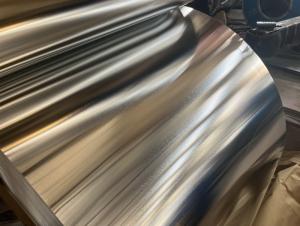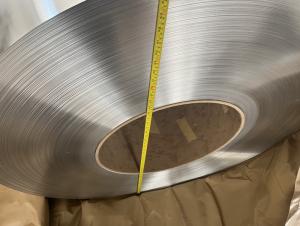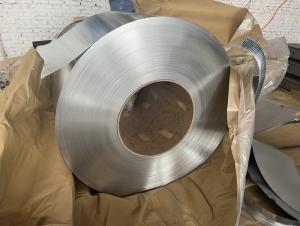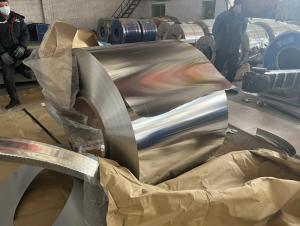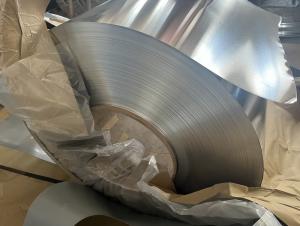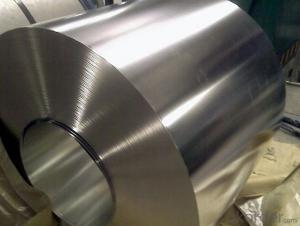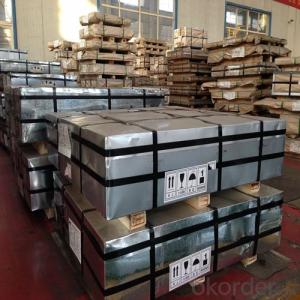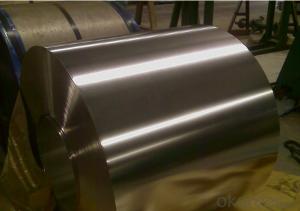Electroytic Tinplate Coil SPTE ETP for Packaging Consumer Industrial Packaging
- Loading Port:
- China main port
- Payment Terms:
- TT or LC
- Min Order Qty:
- 25 m.t.
- Supply Capability:
- 1000 m.t./month
OKorder Service Pledge
Quality Product, Order Online Tracking, Timely Delivery
OKorder Financial Service
Credit Rating, Credit Services, Credit Purchasing
You Might Also Like
Electroytic Tinplate Coil SPTE ETP
Tinplate has a beautiful metallic luster as well as excellent properties in corrosion resistance and paint-ability.
Available Specifications and Sizes
| Steel Type | MR, SPCC |
| Temper (BA&CA) | T1~T5, DR8~DR10 |
| Coating | 1.1~11.2g/㎡ |
| Thickness & Tolerance | 0.15~0.5mm (Tolerance: ±0.01mm) |
| Width & Tolerance | 600~1010mm (Tolerance: +2/-0mm) |
| I.D | 508 mm |
| Coil Weight | 3~10 MT |
| Passivation | 311 |
| Oiling | DOS |
| Surface Finish | Bright, Stone, Silver, Matte, (B, R, R2, S, S1, S2, M) |
| Quantity for 20 Feet FCL | 20~25 Tons |
| Package | Seaworthy Export Standard Wooden Pallet |
Special specifications are available on customers' requirements
Standard Comparison for Temper
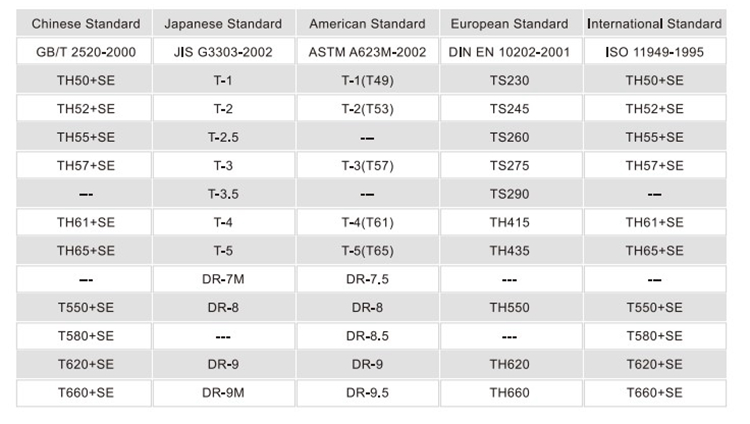
Tin coating weight
1.ETP

2.TFS

Applications of Tinplate and TFS: Consumer Packaging and Industrial Packaging
| TINPLATE | ETP is primarily used for packaging foodstuffs and beverages, but it is also used in containers for oils, grease, paints, polishes, chemicals and many other products. Aerosol containers,caps and closures are also made from ETP. |
| TFS | TFS are most frequently used for can tops, screws and lug caps, snap and press-on closures and shallow-drawn food cans. |
Miscellaneous
| in Electronics | Electrodes, Cable tape, Magnetic screen covers, etc. |
| in Engineering | Automotive oil filters. Automotive air filters, Gaskets, etc. |
| in Construction | Gas meter internal components, Heat exchangers, cookware, shelving, etc. |
Package
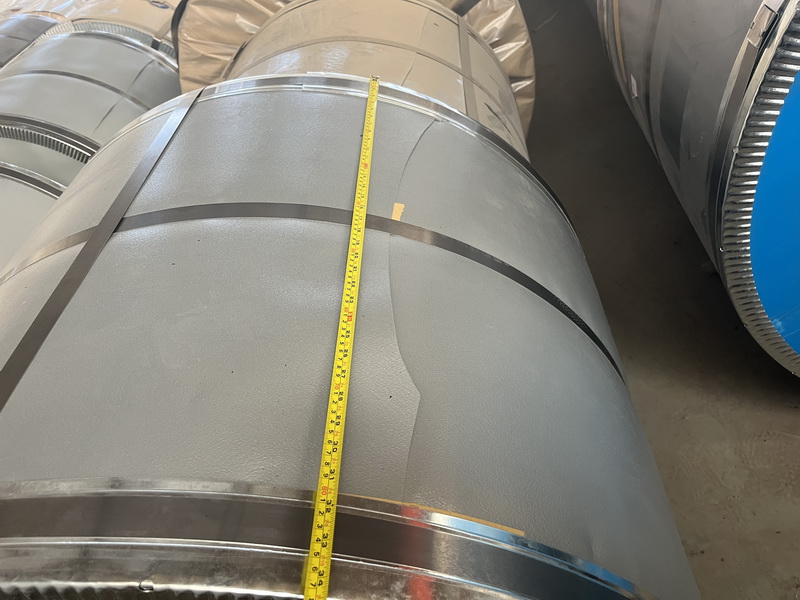
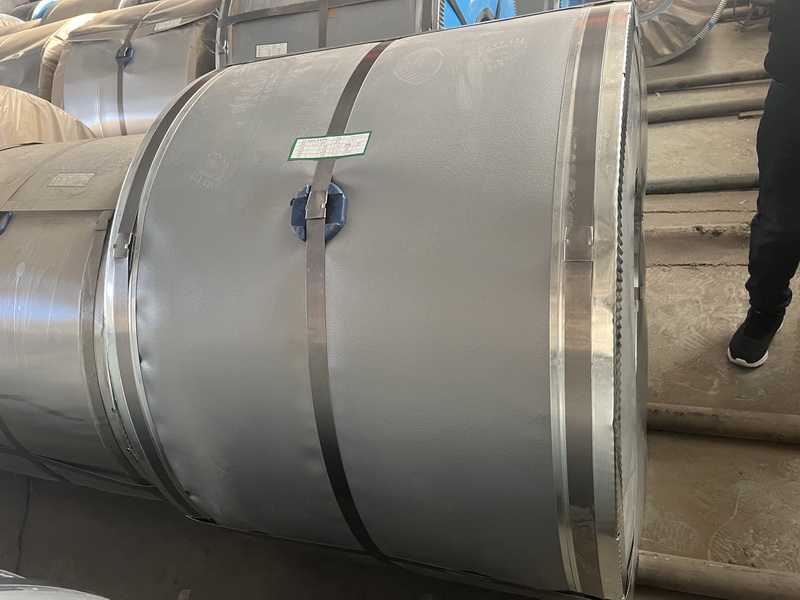
- Q: What are the characteristics of different tin process
- Shapes: tinplate cans can be made into various shapes according to different needs, such as cans, cans, cans, circular elliptical horseshoe and trapezoid etc, can satisfy the different needs of product packaging, and the packaging container more change, promote sales. 6. recyclable: in line with international environmental requirements, in line with future product trends.
- Q: What are the main challenges in tinplate coating thickness control?
- The main challenges in tinplate coating thickness control involve achieving uniformity and accuracy throughout the entire coating process. This requires overcoming issues such as variations in tinplate surface quality, ensuring consistent application of the coating material, and accurately measuring and monitoring the thickness of the coating. Additionally, maintaining control over the coating parameters and adjusting them appropriately to accommodate different tinplate grades and production conditions is also a challenge. Overall, achieving precise and consistent coating thickness control is crucial for ensuring product quality and meeting customer specifications.
- Q: What are the potential health risks associated with tinplate packaging?
- The potential health risks associated with tinplate packaging primarily stem from the potential migration of tin or other metals into the packaged food or beverage. If the tinplate packaging is not properly coated or if it comes into contact with acidic or salty substances, there is a possibility of metal leaching into the product. Prolonged exposure to high levels of certain metals, such as lead or cadmium, can have adverse effects on human health, including kidney damage, developmental issues, and increased risk of some cancers. However, it is important to note that strict regulations and quality control measures are in place to ensure the safety of tinplate packaging, and the risks can be minimized by using suitable coatings and proper manufacturing practices.
- Q: What are the limitations of printing on tinplate?
- There are several limitations to printing on tinplate. Firstly, tinplate is a relatively rigid material, making it difficult to print on curved surfaces or complex shapes. Additionally, the smoothness of the tinplate surface can pose challenges for adhesion and ink absorption, which may result in poor print quality or color accuracy. Furthermore, the printing process on tinplate is often limited to a single color or a limited color palette, which can restrict the design options and creativity. Lastly, the durability of the printed design on tinplate may be compromised over time due to exposure to external factors such as moisture, heat, or scratching.
- Q: How is tinplate used in the beverage industry?
- Tinplate is widely used in the beverage industry for packaging purposes. It is commonly used to make cans for carbonated drinks, fruit juices, and other beverages. Tinplate cans provide a protective barrier against light, oxygen, and moisture, preserving the quality and taste of the beverages. Additionally, tinplate cans are easily recyclable, making them an environmentally friendly choice for the industry.
- Q: What are the main challenges in tinplate recycling?
- One of the main challenges in tinplate recycling is the separation of tin coating from the steel substrate, as the two materials have different melting points. Additionally, the presence of other contaminants such as lacquers and coatings on the tinplate can complicate the recycling process. Furthermore, the collection and sorting of tinplate waste can be challenging due to its prevalence in various product packaging, making it difficult to streamline the recycling system. Overall, technological advancements and increased awareness are necessary to overcome these challenges and improve the efficiency of tinplate recycling.
- Q: Can you tell me how to deal with the recycling of tinplate?
- The tin is magnetic, is easy to recycle scrap. Second, waste tin as scrap iron and steel melted, make steel containing a small amount of tin (less than 0.1%), to improve the performance of cast iron.
- Q: Can tinplate be used for shipping containers?
- Yes, tinplate can be used for shipping containers. Tinplate is a durable material that provides excellent protection against corrosion, making it suitable for shipping containers that need to withstand harsh environmental conditions during transportation.
- Q: What are the recycling processes for tinplate?
- The recycling processes for tinplate typically involve collecting and sorting the tinplate materials, removing any contaminants, such as paper or plastic coatings, and then shredding the tinplate into small pieces. The shredded tinplate is then melted in a furnace to separate the steel from the tin. The steel is recovered and can be used to make new tinplate products, while the tin is commonly reused in various applications or sold as a raw material.
- Q: How does tinplate packaging contribute to product protection against odors?
- Tinplate packaging contributes to product protection against odors due to its ability to create a barrier between the product and the external environment. The non-porous nature of tinplate prevents the penetration of odorous substances, ensuring that the product remains uncontaminated and free from any unwanted smells. Additionally, tinplate packaging is often coated with a protective layer, further enhancing its ability to prevent odor transfer.
Send your message to us
Electroytic Tinplate Coil SPTE ETP for Packaging Consumer Industrial Packaging
- Loading Port:
- China main port
- Payment Terms:
- TT or LC
- Min Order Qty:
- 25 m.t.
- Supply Capability:
- 1000 m.t./month
OKorder Service Pledge
Quality Product, Order Online Tracking, Timely Delivery
OKorder Financial Service
Credit Rating, Credit Services, Credit Purchasing
Similar products
Hot products
Hot Searches
Related keywords
